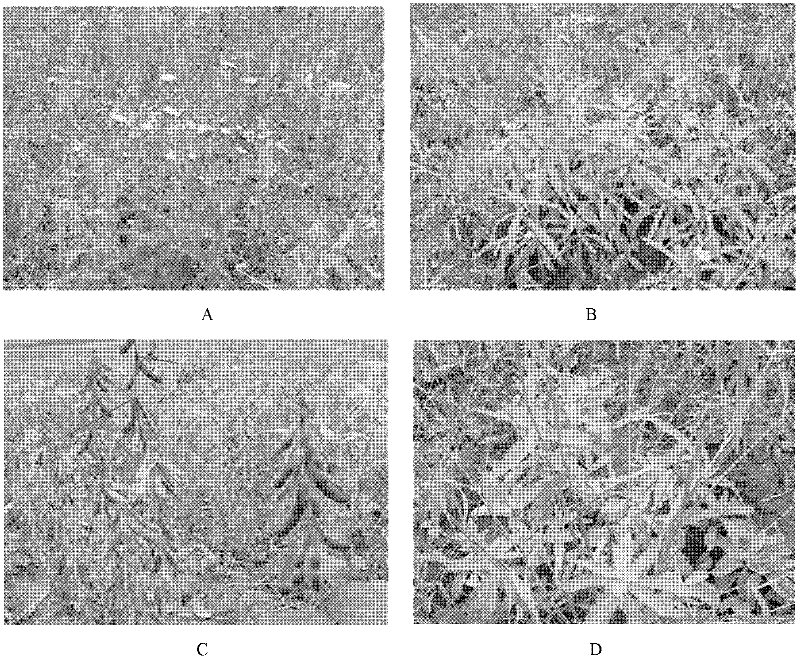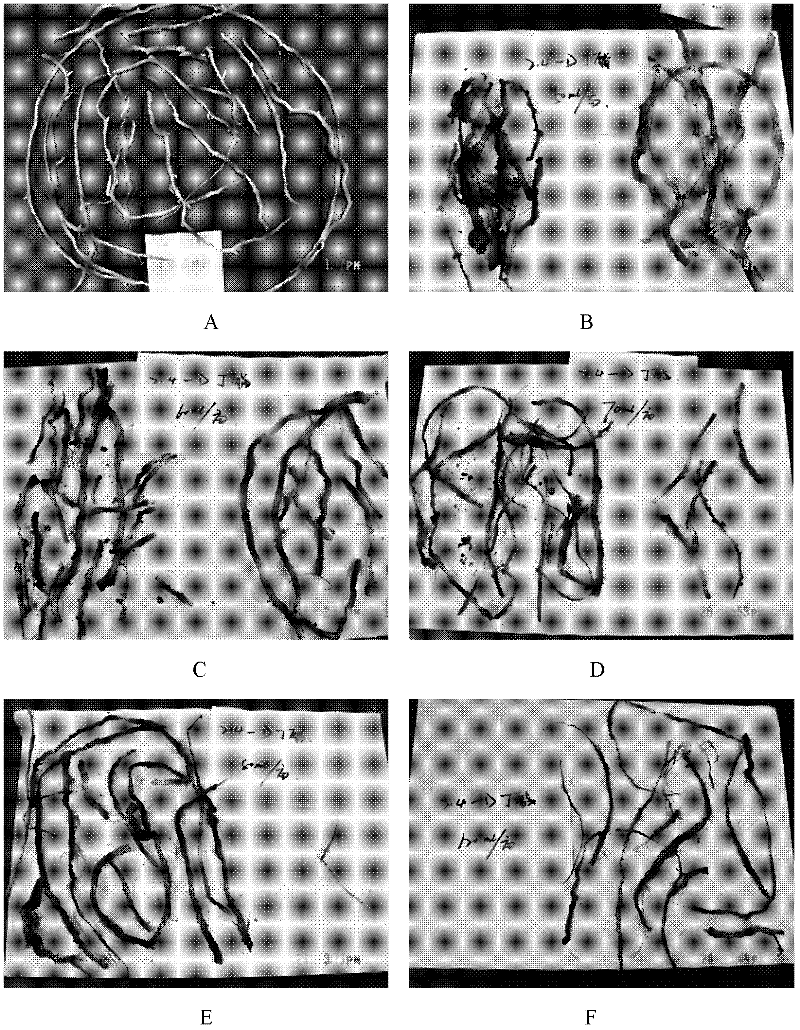Method by utilizing 2, 4-D butyl ester to control perennial weeds in soybean field
A technology of butyl ester and broad-leaved weeds, applied in 2 fields, can solve problems such as volatile drift, control problems, difficult soybean planting, etc., and achieve the effect of low price
- Summary
- Abstract
- Description
- Claims
- Application Information
AI Technical Summary
Problems solved by technology
Method used
Image
Examples
Embodiment 1
[0020] Example 1. Outdoor pot experiment of using 2,4-D butyl ester to control perennial weeds in soybean fields
[0021] The pickle (Sonchus brachyotus DC.) was collected in the soybean field around Harbin, Heilongjiang Province, and the experimental location was on the campus of Northeast Agricultural University in Harbin, Heilongjiang Province. The experiment was grown under natural outdoor conditions, and the water and fertilizer conditions were the same as those in the soybean field; the growth and development of the experiment was consistent with that of the grown in the soybean field.
[0022] In the experiment of this embodiment, from the time of soybean harvest on September 28 to before planting in early May of the following year, the time when the outdoor daily average temperature is lower than -10°C is 90 days.
[0023] In actual production, the harvest of soybeans is done by machines or manually. After harvest, the aboveground parts of plants including soybeans and weeds ...
Embodiment 2
[0035] Example 2. Field test of using 2,4-D butyl ester to control perennial weeds in soybean fields
[0036] The field test site was Hailin City, Mudanjiang, Heilongjiang Province. The pesticide was applied on September 14, 2009, and the soybeans in the field were between R7 and R8 at the time of pesticide application; the broccoli was between the vegetative growth period and the flowering period, and the leaves were still green. The field density of stubble is about 12 plants / m 2 about. The dosage of 2,4-D butyl ester is: 540g a.i. / hm 2 , 648g a.i. / hm 2 , 756g a.i. / hm 2 , 864g a.i. / hm 2 , 1296g a.i. / hm 2 , At the same time, a clean water control (ck) was set up, a total of 6 treatments, a random block design, 3 repetitions. The plot area is 63m 2 (9 ridges×10m×0.7m). Soybeans were harvested on September 26. The experimental fields were not plowed in the autumn of that year, and no cultivation measures were taken the following year. On May 20 of the following year, a 5-point...
Embodiment 3
[0040] Example 3. Using 2,4-D Butyl Ester to Control the Effect of Perennial Weeds in Soybean Fields on Soybean Yield
[0041] The experiment was completed in the soybean field of the experimental practice base of Northeast Agricultural University in 2009. The plot area is 70m 2 (10 rows×0.7m×10m), leave 4 ridges of soybeans on the left and right sides of each plot as protection rows, the actual application area is 42m 2 (6 rows×0.7m×10m), leaving 1m plots between the plots. The experiment has 2 application periods: soybean R7 period (September 8th), soybean R8 period (September 18th), the dosage of 2,4-D butyl ester is 540g a.i. / hm 2 , 648g a.i. / hm 2 , 756g a.i. / hm 2 , 864g a.i. / hm 2 , 1296g a.i. / hm 2 , With spraying water control, a total of 11 treatments, 4 repetitions, random block design. On September 28, harvest the 4 rows of soybeans in the middle of each plot for threshing, weigh the 100-seed weight and calculate the yield. The results are shown in Table 3. The test res...
PUM
 Login to View More
Login to View More Abstract
Description
Claims
Application Information
 Login to View More
Login to View More - R&D Engineer
- R&D Manager
- IP Professional
- Industry Leading Data Capabilities
- Powerful AI technology
- Patent DNA Extraction
Browse by: Latest US Patents, China's latest patents, Technical Efficacy Thesaurus, Application Domain, Technology Topic, Popular Technical Reports.
© 2024 PatSnap. All rights reserved.Legal|Privacy policy|Modern Slavery Act Transparency Statement|Sitemap|About US| Contact US: help@patsnap.com










